Still Lifes Are Anything but Still: Poet Diane Seuss at Literati
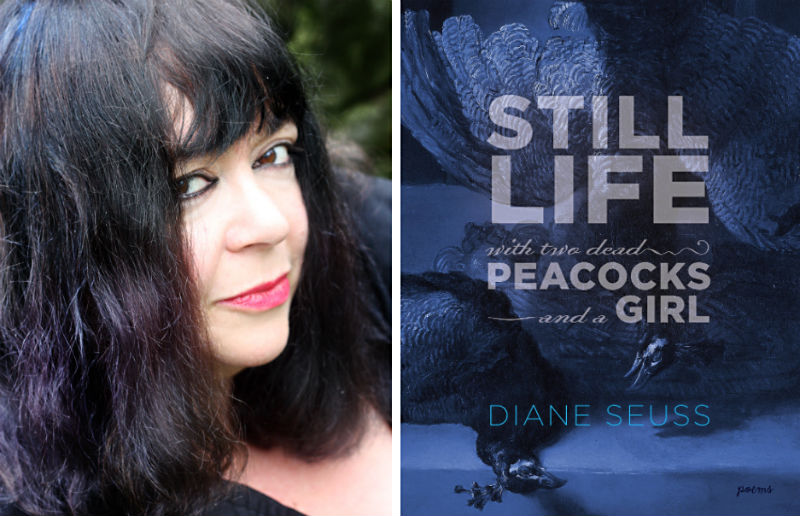
"Self Portrait with the Ashes of My Baby Blanket":
Ashes because she set fire to it in the burn barrel.
Leave her alone, with your newfangledness.
I was a clingy, fearful thumb-sucker, and she knew I needed reinventing.She tore it away and I screamed and she burned it.
Begone, soft, pale yellow. She knew if I kept it I’d stumble over it
The rest of my life, how far I would travel without it,And how many strange birds I would trap
in the story of its burning.
At a Literati reading this past Friday, poet and professor Laura Kasischke introduced Diane Seuss by reading one of her poems, “Self Portrait with the Ashes of my Baby Blanket.” The poem centers on Seuss’ mother, who is an important figure in her new book of poems, Still Life with Two Dead Peacocks and a Girl. The first and last poem, "I Have Lived My Whole Life in a Painting Called Paradise” and “I Climbed Out of the Painting Called Paradise,” introduce the reader to a heavenly, creative world that Seuss is able to inhabit but one that her mother, who is not a writer, cannot. Seuss “leaves” the painting to rejoin her family at the end of the book.
"Gruesome Playground Injuries" continues Kickshaw's dedication to challenging theater
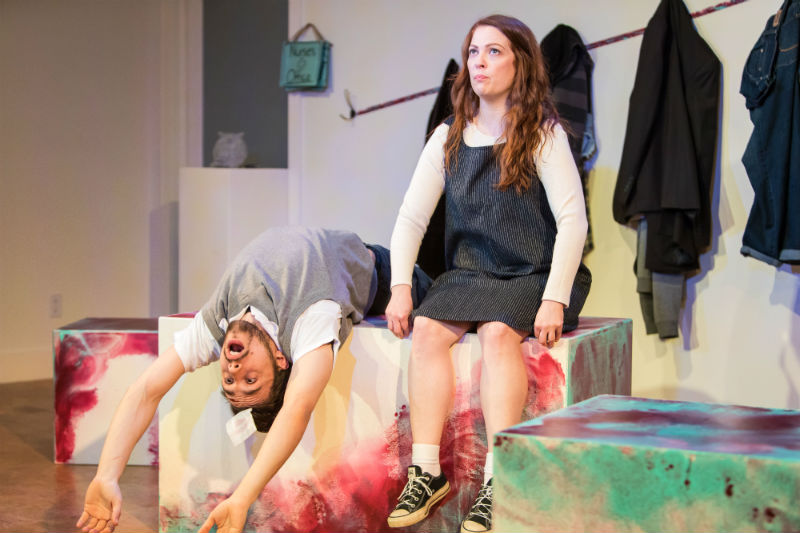
Fittingly, Rajiv Joseph’s Gruesome Playground Injuries, now being staged by Kickshaw Theatre at Ann Arbor’s trustArt Studios, starts in a parochial school’s infirmary, where a deep, lasting friendship takes root between a girl and a boy who recognize in each other a common compulsion toward self-destruction.
The boy, Doug (Michael Lopetrone), is a reckless, thrill-seeking daredevil, while the girl, Kayleen (Dani Cochrane), suffers from stomach problems and later develops a serious cutting habit. The 80-minute play shows glimpses of these two characters at several different ages, between 8 and 38, but it jumps around in time, inviting us to piece together the puzzle of Doug and Kayleen’s intense connection by shifting from childhood to adulthood and back again.
Shaman Sounds: Abdullah Ibrahim at the Michigan Theater
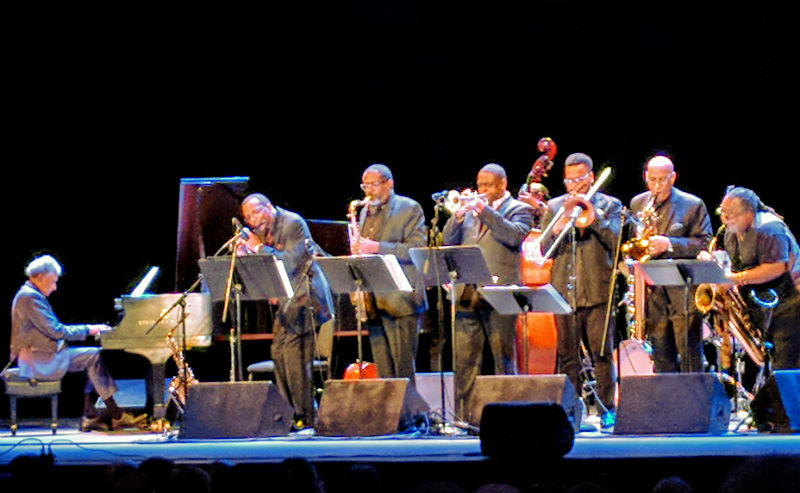
Abdullah Ibrahim's concert at the Michigan Theater on April 13 began like all his shows: the pianist alone on stage with his instrument, playing a meditative piece filled with sustained chords, floating harmonies, and a sound that slipped naturally from Bach to blues. Then Cleave Guyton (flute) and Noah Jackson (cello) joined Ibrahim for the chamber-jazz piece "Dream Time" from 2014's Mukashi.
It was in these solo and trio moments that listeners could best appreciate the 83-year-old Ibrahim's piano playing -- because otherwise, he didn't play much at all.
Tripping Hither, Tripping Thither: UMGASS delights with "Iolanthe"
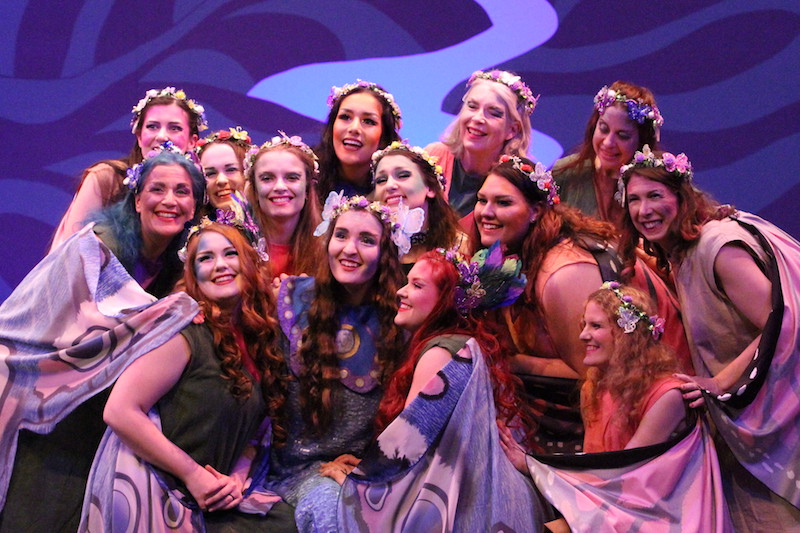
This weekend, the University of Michigan Gilbert and Sullivan Society (UMGASS) stages Iolanthe, bringing Thirsty Fairies, Peer Pressure, and one long strange trip of a dream sequence to the Mendelssohn Theater. Iolanthe is the seventh of Gilbert & Sullivan's 14 comic operettas, steeped in the class divisions and political satire of the day, with a hearty dollop of supernatural weirdness.
Directed by Greg Hassold and featuring an extremely solid pit orchestra led by Thomas Burton, this wonderfully busy production has a lot going on in every scene and is just dripping with the talent of fresh-faced leads, seasoned supporting characters, and a chorus that is plainly having a wonderful time.
U-M Gifts of Art spring exhibitions aim to revitalize and renew

Michigan Medicine’s Gifts of Art program regularly supports artists while working to “revitalize and enrich lives” of patients and visitors. The latest Gifts of Art series on display in various parts of University Hospital is available to view through June 10. The eight small exhibits in Gifts of Art's nine galleries feature the works of artists Tina West, Richard Light, John Dempsey, Mary Brodbeck, Aimee Lee, Re Kielar, f8collective, and WCC faculty, staff, and students.
Purple Rose Theatre delivers a hilarious send-up of Sherlock Holmes
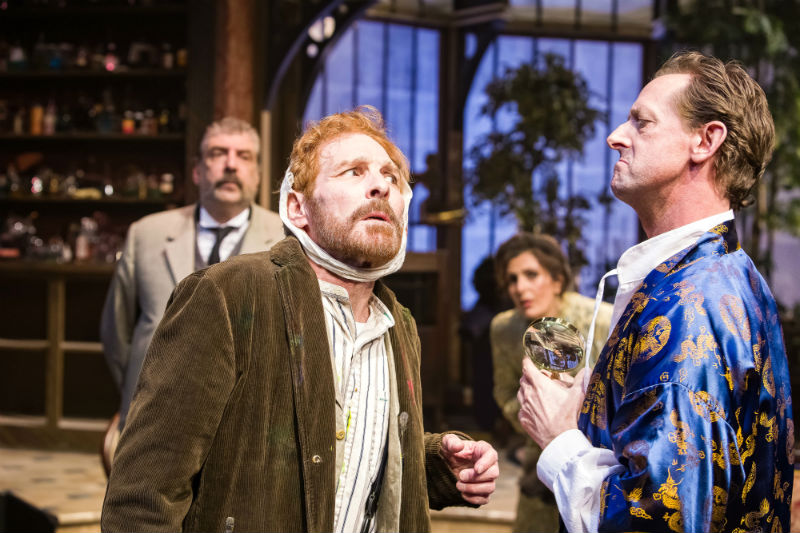
Arthur Conan Doyle purists may be shocked. But imagine an alternative universe in which Doyle’s famous detective Sherlock Holmes and “the woman” Irene Adler are lovers and live together at 221B Baker Street with Holmes’ trusted companion and chronicler Dr. John Watson.
That’s the set up for Detroit playwright David MacGregor’s hilarious Sherlock Holmes and the Adventure of the Elusive Ear at the Purple Rose Theatre.
UMMA's "Exercising the Eye" shows how Gertrude Kasle expanded the Midwest art scene in the 1950s

The University of Michigan Museum of Art’s exhibition Exercising the Eye: The Gertrude Kasle Collection presents an array of works by influential artists of the 20th century. Many of these artists, as pointed out by the exhibition organizers, were, in part, brought to prominence in the Midwest by Gertrude Kasle’s (1917-2016) promotion of their works.
"Did You Wonder Who Fired the Gun?" is a film about threats -- racial and otherwise
“Trust me when I tell you this isn’t a white savior story. This is a white nightmare story.”
--Travis Wilkerson
If I were a moth, the story of white men reckoning with race in America would singe my wings every time. With that in mind, I was not disappointed when I went to see Travis Wilkerson’s Did You Wonder Who Fired the Gun? on March 24 as part of the Ann Arbor Film Festival. In fact, there are about eight pieces I could write about this film, which was one of the 10 features in competition at the year's fest and ended up winning the Michael Moore Award for Best Documentary Film.
Diaspora Dimensions: The films in URe:AD TV grapple with black representation
“The diaspora is a cultural continuum. An ever-evolving consideration of Blackness is its vehicle.”
--Ashley Stull Meyers
The United Re: Public of the African Diaspora Television (URe:Ad TV) special program at the Ann Arbor Film Festival was an experience.
URe:AD TV is a network of creators who make print and audiovisual work by and for the African diaspora. Curated by Shani Peters and Sharita Towne, the works grapple with the meaning(s) of black representation. By "grapple," it could be said that these works record meaning, and make meaning.
U-M's "Angels in America, Part 1: Millennium Approaches” mines complex humor & heartbreak

It’s amazing how, when a brilliant script is masterfully executed, three and a half hours can seem to pass in the blink of an eye.
Yet that’s the experience you’ll have if you’re lucky enough to catch the University of Michigan Department of Theatre and Drama production of Tony Kushner’s Angels in America, Part 1: Millennium Approaches -- which is so terrific that it’ll remind you all over again why the play has earned its status as a timeless masterpiece.


































